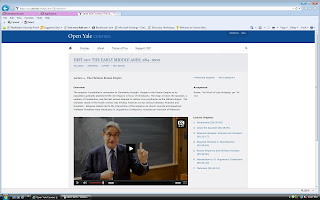Distance Learning - EDUC 6135
Thursday, August 8, 2013
Scope Creep -EDUC 6145 Week 6
Thursday, August 1, 2013
Thursday, July 18, 2013
EDUC 6145 Week 3
The Art of Effective Communication
Walden University – EDUC 6145
This is a common issue with communication. Like the video Communicating with Stakeholders told us this week: 93% of communicating is not the words you deliver (Laureate, 2013). Using email is quick and effective. It cuts down costs for paper, or for having the group all meet at once. It allows for people from different continents to communicate instantly. However, it loses spirit, tone, attitude, and other non-verbals that may help communicate effectively. The answering machine does better with tone, spirit, and attitude but still misses out on the other visual cues. Face to face communication is best, but is not always available. For example, my building uses email religiously because we may be in the same building but we have different responsibilities at different times. For different messages each can be utilized effectively.
I read the email as a favor I would be doing for Jane. It was somewhat whiny and comes off as long winded. She went out of her way to write redundant sentences to feign sincerity. She could have just wrote: “Mark I need that report. I know your busy, but I am stalled until I get them.” She didn't because that sounds impolite.
Voicemail
She sounded sincere and it didn't sound like I was doing her a favor. It sounds more like she was extending me a courtesy to warn me about a missing report I should have already completed. The sentences were word for word as the email, but this sounded more natural. I would feel more compelled to work on the report if I was Mark.
Face-to-Face
She looked desperate for me to just do my end of the work. I actually think Mark should be embarrassed she had to ask. I also think it would be harder to ignore or forget her request if she asked in person. An email can easily be disregarded, but the more personal the modality the harder to forget.
I learned that for small informal messages that are low on the priority list; Email is a fine way to easily communicate. Yet, the more important the message, the more personal the modality has to be. If I was Carlos from Case Study 29, I would have communicated more through face-to-face modality than he did. He made it easy for people to ignore/forget what he requested because he used email. To see someone is person and get cues back from them assuring they understood makes it almost impossible to have a miscommunication. In the future I will use this idea to motivate underproducing team members.
References
Laureate Education, Inc. (Producer). (n.d.). Communicating with Stakeholders. [Multimedia]. Retrieved from http://laureate.ecollege.com Laureatte Education, (n.d.) 2013.

